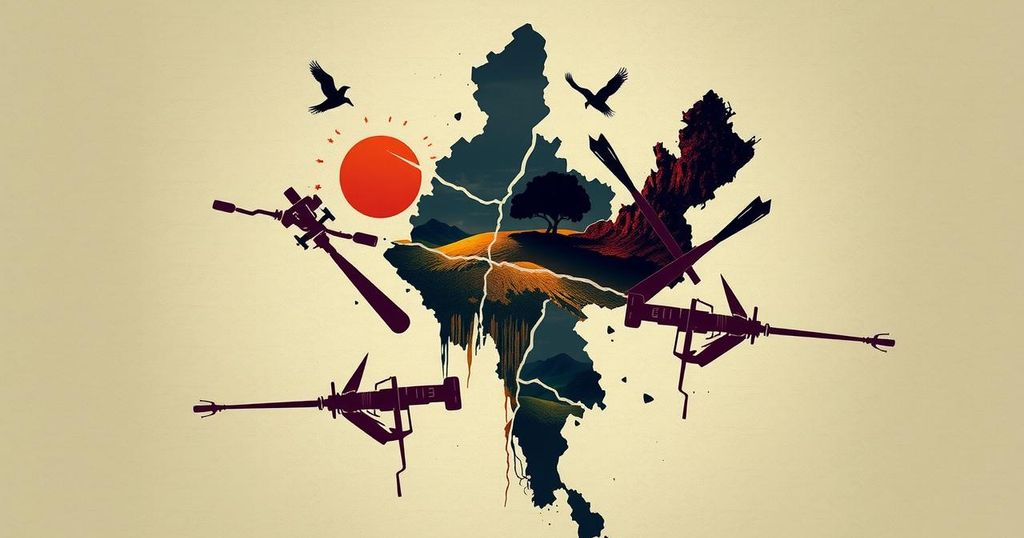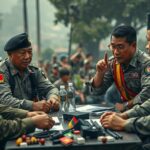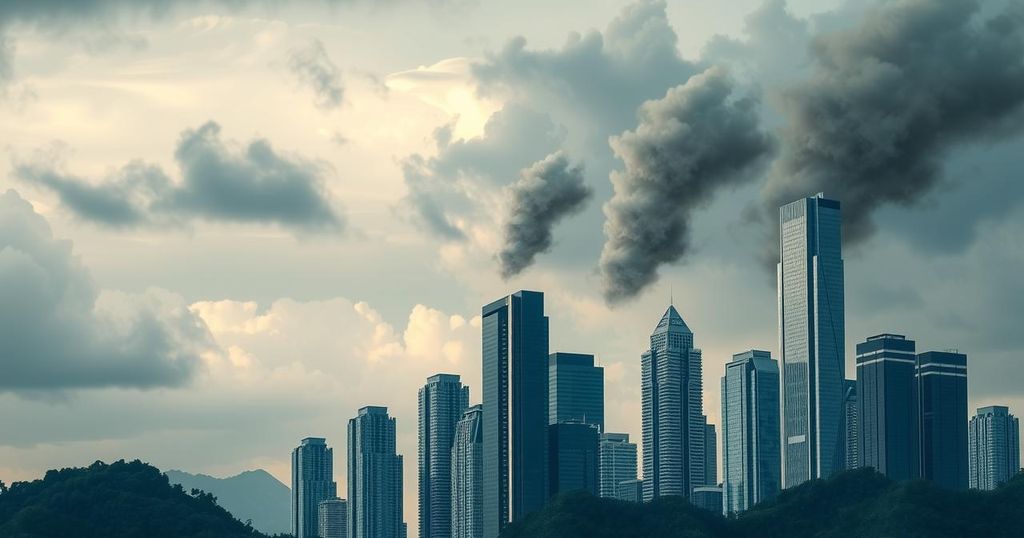Myanmar Rebels Encounter Junta Control Challenges Entering Fifth Year of War
Myanmar’s civil war escalates as rebel groups significantly advance, gaining territory and challenging the junta’s control. A BBC study reveals the junta governs only 21% of the territory compared to 42% held by rebels. While Chinese influence seeks to stabilize the junta, internal divisions among rebels and changing dynamics complicate the situation. Experts foresee ongoing challenges for the junta due to manpower shortages and increased rebel activity as violence persists.
Myanmar has entered its fifth year of civil war, following a military coup in February 2021. Rebel groups have made significant advances, capturing extensive territories in the western and northeastern regions of the country, including the seizure of military command bases. Analysts predict that these rebels will continue to gain ground in 2025 despite efforts by China to support the junta, which has substantial investments in Myanmar.
A report by the BBC indicates that the junta maintains control over only 21% of Myanmar, while a coalition of rebel groups occupies 42% of the territory. This unprecedented cohesion among the rebels allows them to conduct coordinated operations across vast regions, creating challenges for the junta that struggles to regain lost ground. Experts suggest a fundamental shift in the dynamics of warfare in the country.
The progress of rebel groups, however, is uneven. In Shan State, China pressured some rebels, such as the MNDAA, into a ceasefire, impacting their momentum. Additionally, the United Wa State Army (UWSA)—another major rebel faction—has been directed to limit arms supply to other groups, which has hindered some offensive operations.
Despite these setbacks, other factions remain active. For instance, the Kachin Independence Army recently seized control of rare earth mines, prompting China to cautiously resume border trade and address the evolving situation. Furthermore, the Arakan Army has made significant strides, consolidating control in Rakhine state and threatening key infrastructure necessary for China’s energy endeavors.
Military losses have exposed the junta’s vulnerabilities, primarily due to manpower shortages. As rebel forces close in, the junta has implemented conscription measures to counteract losses from defections and combat attrition. Analysts note that the inability of the military to respond effectively to rebel advances could lead to its sustained territorial losses.
Both the junta and the rebel factions face challenges. The rebels contend with limited ammunition supplies and lack of unified strategic direction, which could impede their advances. Notwithstanding these difficulties, ongoing conflict results in significant casualties and displacement, with millions affected since the beginnings of warfare.
Experts underscore the junta’s resilience, bolstered by foreign support; however, they assert that its collapse appears increasingly likely. The critical factor remains China’s assessment of the junta’s role in safeguarding its interests, which could lead to turnover in support should the situation deteriorate further.
The ongoing civil war in Myanmar stems from the military coup in February 2021, which ousted the democratically elected government. Since then, various ethnic rebel groups have intensified their military engagements against the junta, capitalizing on widespread discontent and resistance among the populace. Over time, these factions have evolved from fragmented entities into cohesive forces that now challenge the junta’s authority across substantial areas of the country. The geopolitical implications of this conflict are significant, particularly regarding China’s involvement and interests in the region.
As Myanmar’s conflict nears the fifth year, rebel groups gain momentum against a weakened military regime. The disparate success of various factions reflects a complex battlefield influenced by local and international dynamics. The junta’s persistent struggles could lead to further territorial losses unless external support stabilizes its position. Understanding the evolving landscape will be critical as both domestic and international stakeholders navigate the ramifications of this conflict in 2025 and beyond.
Original Source: www.voanews.com








Post Comment